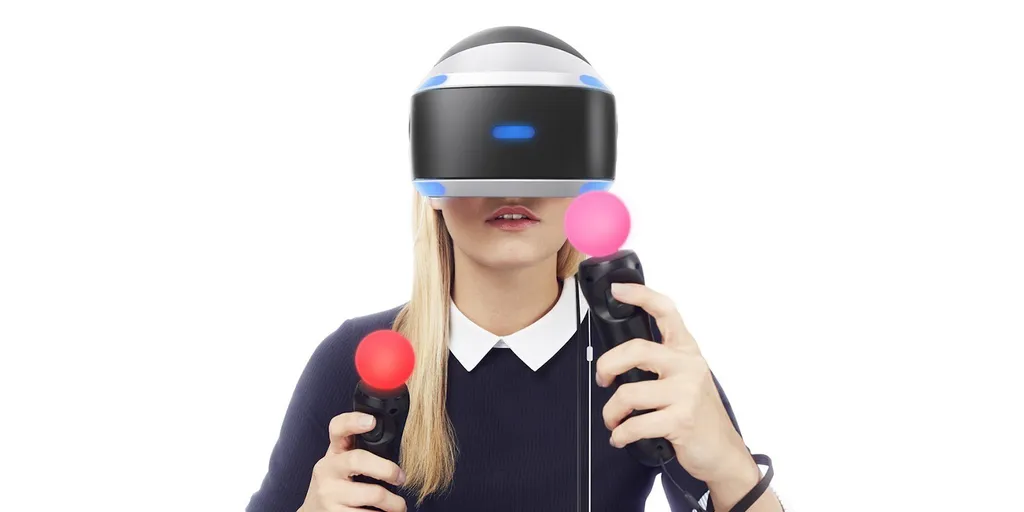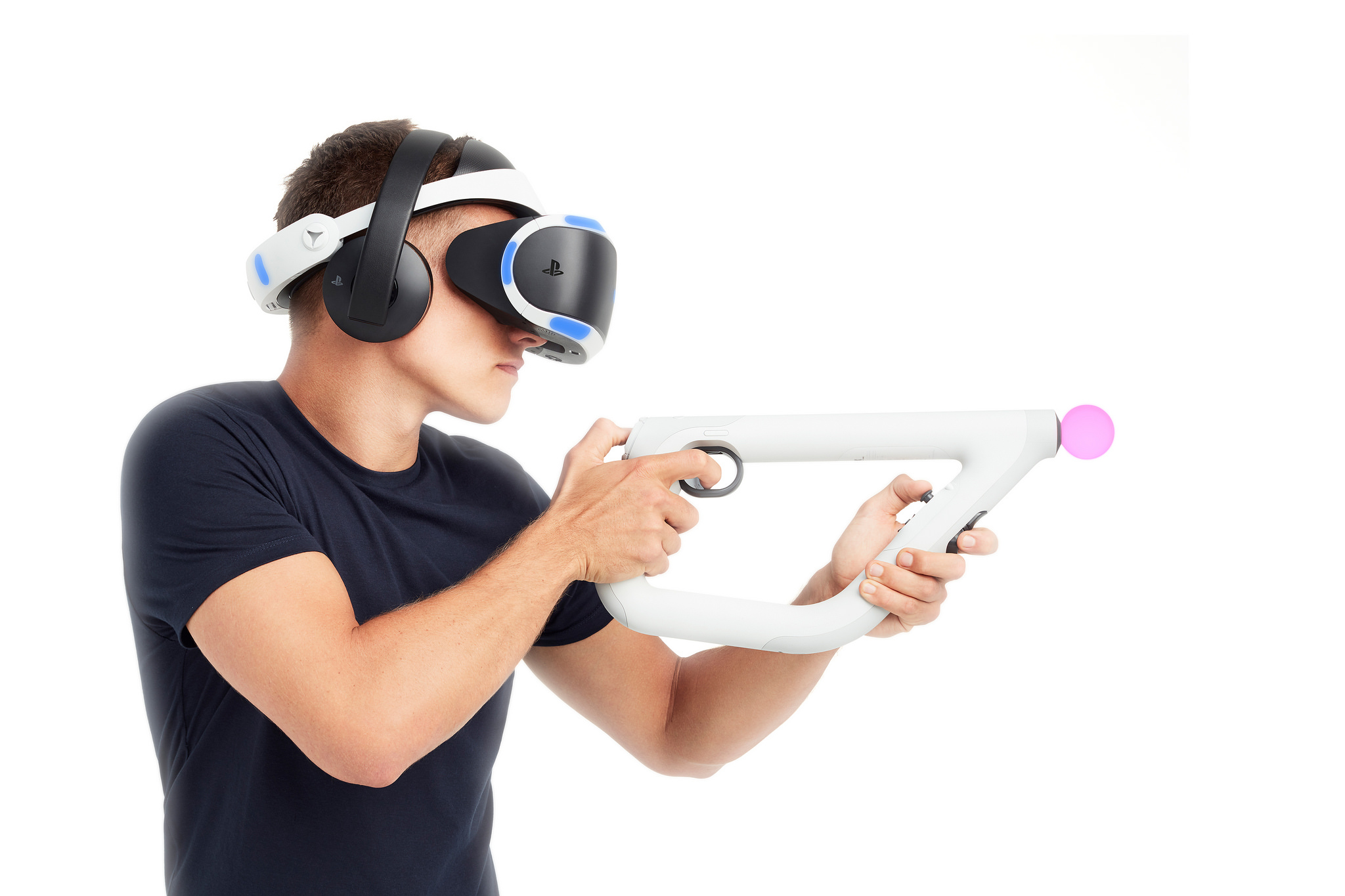Of all of the major VR headsets on the market today, Sony’s PSVR stands to gain the most from an upgrade. But what might we see in a next-generation PSVR? Senior vice president of R&D at Sony, Dominic Mallinson, has some ideas, and they’re pretty exciting.
Mallison held a session at the Collision 2019 in Toronto this week, as covered by VentureBeat. There he talked about what to expect from the next generation of VR headsets. To be clear, he didn’t specifically confirm the features in question would appear in the unannounced PSVR 2. That said, this is likely as good an indicator of what you’ll see in the headset we’ve yet seen.
Roughly Double Resolution And HDR
For starters, Mallinson said he expects the resolution in the “next set of VR products” to “roughly double” in pixel count. Current VR headsets use high definition displays that allow us to peer into virtual worlds. But, with more pixels, devices can cut down on the dreaded ‘screen door effect’, a term which refers to seeing the lines between pixels, distorting the image. PSVR currently uses a 1080p display but Oculus, HTC and Valve have already started improving resolution in their successive headsets.
Not only that but Mallison expect to see high-dynamic range displays adopted in “the near future.” HDR brings a wider array of colors to our screens. “The human eye sees an enormous range of light from bright sunlight to deep shadow,” Mallison said. “Today’s VR panels only capture a tiny fraction of that. So in order to increase the sense of presence, I do expect to see HDR adopted in the near future.”
120 Degree Field Of View
The field of view (FOV) defines how much of a virtual world you can see. PSVR is said to have an FOV of around 100 degrees. Mallinson expects that to jump to around 120 degrees in the next generation of VR. He said the area has “diminishing returns”, likely referring to the issues that come with a wider FOV, like potentially feeling more uncomfortable when moving in VR.
Optional Wireless
This is an important one. Mallinson noted that user comfort is “incredibly important” to getting more people into VR. He sees the cable that connects a headset to a console/PC as a big hurdle. “So this is something that we have to solve in order to get wider adoption,” he said.
But what does that mean? Would a new PSVR be an all-in-one headset like Oculus Quest, or could it run on a wireless network with a console? Mallinson suggested the latter but, crucially, also said this could be an option for consumers rather than a necessity.
“That’s one easy way to do it. Here’s a wired headset,” he told VentureBeat. “You can take the wire and replace it with wireless. And then you can have a range. So you can have an introductory model and a high-end model. That’s something we’ve done with PlayStation 4. We could do that with PSVR.”
Eye-Tracking
Finally, we have one of the most sought-after innovations in VR, eye-tracking. This involves a sensor detecting where your eyes are looking on a virtual display. Mallinson says this could be used as a new form of input. More importantly, though, eye-tracking could be used for foveated rendering on a next-generation PSVR.
This is a technique in which a machine powering VR only fully renders the area of the screen the user is directly looking at. The rest of the world isn’t fully rendered, but this isn’t noticeable in the user’s peripheral vision. This greatly reduces the processing power on the machine. It could well mean we get even more out of, say, Sony’s upcoming PlayStation 5 than the base increase in power over the PS4 already enables.
The Future
As exciting as all of this is to hear from a PlayStation representative, we still don’t know which if any of these improvements will be in PSVR 2. Mallinson also didn’t touch on other important areas like controller input, which Sony appears to be working on.
For now, we know that PS5 will support the original PSVR when it launches beyond 2019. Sony isn’t announcing a next-generation PSVR just yet, but at this point it seems certain it will be a reality.





























